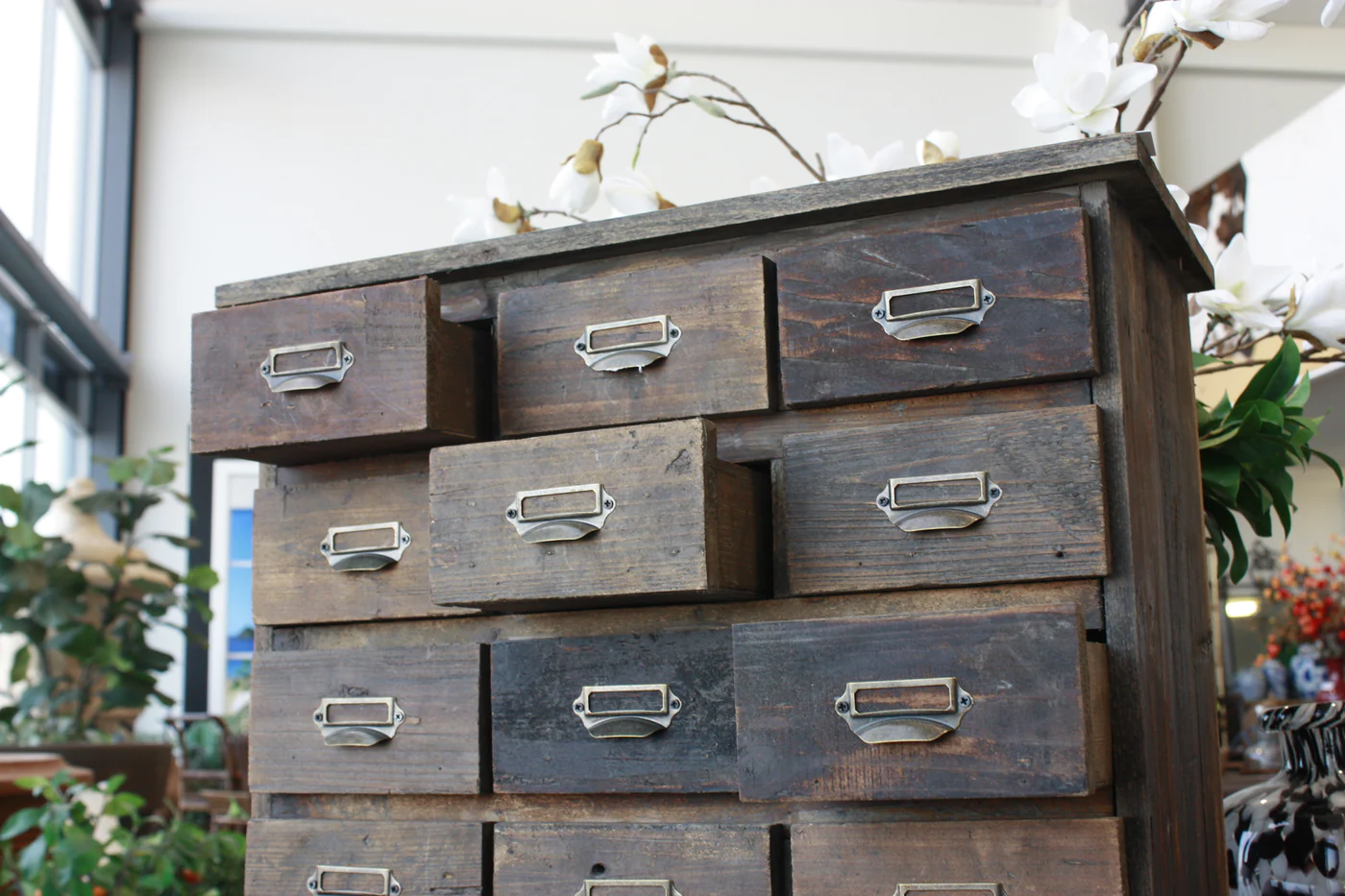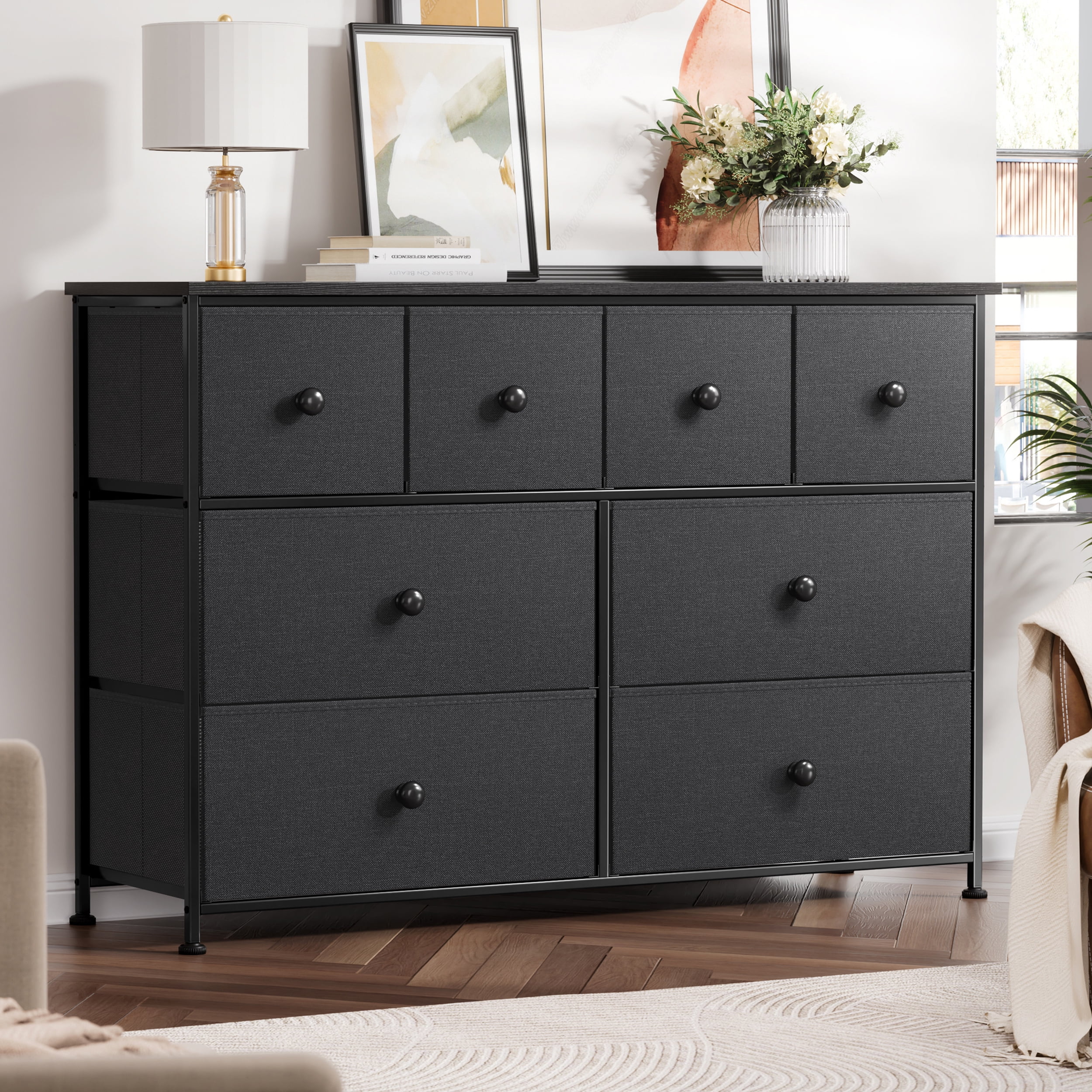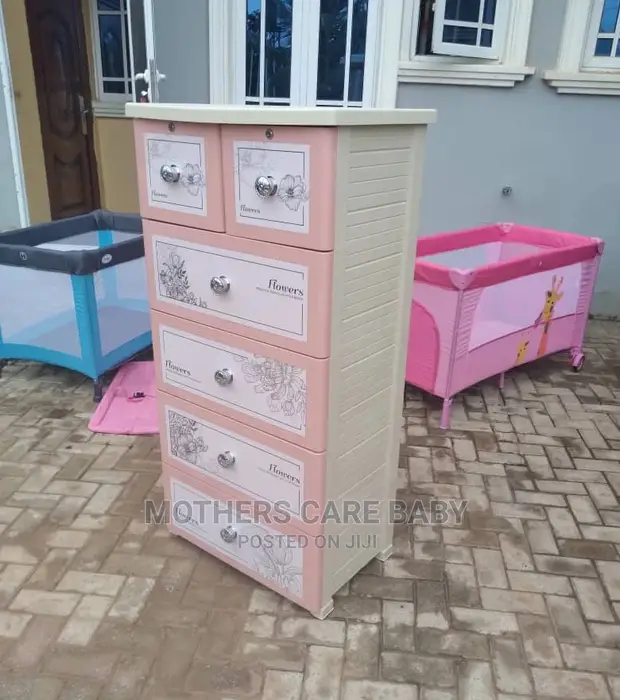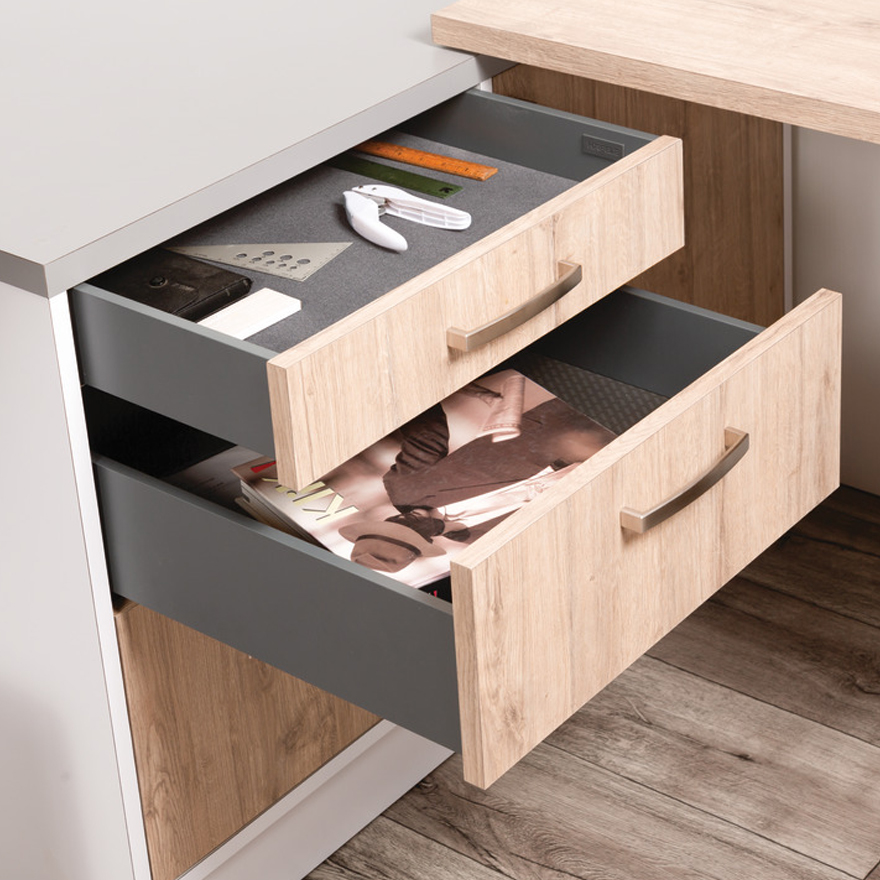Drawers Decoded: Crafting Functional Elegance in Furniture Design
Dive into the world of drawers, where form meets function in furniture design. Explore the nuances of recessed and overlay drawer faces, uncover the craftsmanship behind their stability, and understand their pivotal role in creating organized and visually appealing living spaces.
Exploring Recessed and Overlay Drawer Faces: Aesthetic Brilliance in Furniture

In the context of furniture, a "drawer" refers to a sliding compartment or box within a piece of furniture, such as a dresser, cabinet, or desk. Drawers are typically designed to slide in and out horizontally, providing storage space for various items. They are often used to keep belongings organized and easily accessible.
Types of Drawers:
- Standard Drawers:
- The classic, ubiquitous drawer found in dressers, cabinets, and desks. It slides in and out horizontally, providing basic and efficient storage.
- File Drawers:
- Commonly found in office furniture, these drawers are designed to store documents, files, and folders vertically. They often feature built-in dividers for better organization.
- Roll-out Shelves:
- A modern take on drawers, these shelves slide out smoothly, offering accessibility and visibility to the stored items. Ideal for kitchens and pantry cabinets.
- Hidden Drawers:
- Crafted for secrecy, hidden drawers are discreetly integrated into furniture, blending seamlessly with the overall design. Perfect for storing valuables or maintaining a clean aesthetic.
Benefits of Drawers:
Maximized Storage: Drawers optimize storage space by efficiently utilizing the entire volume within a piece of furniture, preventing wasted or hard-to-reach areas.
Concealed Clutter: Concealing items behind closed drawers maintains a neat and clutter-free appearance, contributing to an organized living or working space.
Easy Accessibility: The sliding mechanism of drawers allows for easy access to stored items without the need to rearrange or move other objects.
Customization: Drawers come in various sizes and configurations, allowing for customization to suit specific storage needs, whether it's clothing, office supplies, or kitchen utensils.
Making of Drawers:
- Material Selection:
- Craftsmen choose materials such as hardwoods, plywood, or engineered wood for durability and aesthetic appeal.
- Joinery Techniques:
- Dovetail and mortise-and-tenon joints are commonly used for their strength and longevity, ensuring the drawer withstands frequent use.
- Slides and Glides:
- The mechanism that allows smooth sliding is crucial. Ball-bearing slides or wooden runners are employed, providing stability and ease of movement.
- Finishing Touches:
- Craftsmen carefully finish the exterior surfaces, applying stains, paints, or veneers to enhance the visual appeal and protect the wood.
FAQ
Why do we use drawers?
Drawers are used for several practical reasons, and they serve as essential components in furniture design. Here are some key reasons why drawers are commonly used:
- Organization:
- Efficient Storage: Drawers provide a systematic and organized way to store various items. They allow for the categorization and separation of belongings, making it easier to locate specific items when needed.
- Accessibility:
- Easy Access: The sliding mechanism of drawers enables quick and easy access to their contents. This accessibility is particularly beneficial for frequently used items, such as clothing in a dresser or utensils in a kitchen drawer.
- Space Optimization:
- Maximizing Storage: Drawers are designed to make the most of available space. They can be stacked vertically or arranged side by side, optimizing the storage capacity within a piece of furniture.
- Visibility:
- Clear View: Unlike closed cabinets, drawers often provide a clear view of their contents. This visibility makes it simple to see and identify items without the need to open doors.
- Aesthetics:
- Design Element: Drawers contribute to the aesthetics of furniture. They can enhance the visual appeal of a piece by adding symmetry, balance, and a sense of order to its design.
- Customization:
- Tailored Storage: Drawers come in various sizes and configurations, allowing for customization based on the specific needs of the user. This flexibility enables tailored storage solutions for different types of items.
- Versatility:
- Multifunctional Use: Drawers are versatile and can be incorporated into a wide range of furniture types, including dressers, nightstands, desks, kitchen islands, and filing cabinets. This versatility makes them suitable for various living spaces.
- Concealment:
- Hidden Storage: Drawers are effective for concealing items and maintaining a neat appearance. Valuables or items that are not aesthetically pleasing when exposed can be stored discreetly in drawers.
- Prevention of Clutter:
- Neat Appearance: Drawers contribute to a clutter-free environment by providing a designated space for items. This helps maintain a neat and organized appearance in living spaces.
What holds a drawer in place?
Several mechanisms are used to hold drawers in place within furniture. The primary goal is to provide stability and prevent the drawer from moving or falling out unintentionally. Here are common methods used to secure drawers:
- Drawer Slides or Runners:
- Roller Slides: These are often seen in lighter drawers and consist of rollers that move along a track.
- Ball-Bearing Slides: Suitable for heavier drawers, ball-bearing slides use ball bearings to allow smooth movement along a track.
- Undermount Slides: These slides are mounted underneath the drawer, providing a clean and concealed look.
- Drawer Stops:
- Mechanical Stops: These are physical stops, often in the form of a metal or plastic component, that prevent the drawer from being pulled out too far. Stops can be installed on the sides of the drawer or within the cabinet structure.
- Anti-Tip Mechanisms: Especially important for tall or heavy drawers, anti-tip mechanisms prevent multiple drawers from being opened simultaneously, reducing the risk of the furniture tipping over.
- Center Rail and Guide:
- Center Rail: A horizontal rail in the center of the drawer opening can help support the middle of the drawer and prevent sagging.
- Center Guide: A guide within the center of the drawer bottom ensures that the drawer moves smoothly along the rail.
- Dovetail Joints:
- Interlocking Design: Dovetail joints are commonly used in high-quality furniture. The interlocking design of these joints provides strength and helps hold the drawer together.
- Magnetic Catches:
- Magnetic Mechanism: In some cases, magnetic catches are used to keep drawers closed securely. These are often found in cabinets with concealed drawers.
- Friction and Tension:
- Friction Mechanisms: Friction can be employed to create resistance when opening or closing a drawer, preventing it from moving too easily.
- Tension Adjustments: Some drawer slides have tension adjustments that allow users to customize the resistance of the slide.
What are the two types of drawer faces?
The two main types of drawer faces are:
- Recessed Drawer Face:
- In a recessed or flat drawer face, the front of the drawer is set back or recessed within the frame of the furniture. This design creates a clean and modern look. The face is typically smooth and flush with the surrounding structure, providing a simple and understated appearance. Recessed drawer faces are commonly used in contemporary and minimalist furniture designs.
- Overlay Drawer Face:
- In an overlay drawer face, the front of the drawer extends beyond the frame of the furniture, overlaying the surrounding structure. This design creates a distinctive border or frame around the drawer. Overlay drawer faces can be further categorized into different styles based on the extent of the overlay:
- Full Overlay: The drawer face fully covers the entire front of the drawer opening, leaving little to no visible frame.
- Partial Overlay: The drawer face partially covers the front of the drawer opening, with some of the frame still visible around the edges.
- In an overlay drawer face, the front of the drawer extends beyond the frame of the furniture, overlaying the surrounding structure. This design creates a distinctive border or frame around the drawer. Overlay drawer faces can be further categorized into different styles based on the extent of the overlay:
What is called a cabinet?
A cabinet is a piece of furniture with enclosed storage space, typically featuring doors, drawers, or both. Cabinets are designed to store and organize various items, ranging from kitchen utensils and dishes to clothing, books, or personal belongings. The term "cabinet" is quite broad and can refer to different types of furniture used for storage in various contexts. Here are some common types of cabinets:
- Kitchen Cabinet:
- Used in kitchens to store dishes, cookware, food items, and kitchen appliances. Kitchen cabinets often have shelves, drawers, and sometimes glass doors.
- Bathroom Cabinet:
- Designed for storing toiletries, towels, and personal care items in bathrooms. Bathroom cabinets may have shelves, drawers, or a combination of both.
- File Cabinet:
- Specifically designed for storing documents, papers, and files in an organized manner. File cabinets typically have drawers that can accommodate letter or legal-sized documents.
- Medicine Cabinet:
- Found in bathrooms, medicine cabinets are designed for storing medications, first aid supplies, and personal care items. They often have a mirrored door.
- Storage Cabinet:
- A generic term for cabinets used for general storage purposes. These cabinets can be used in various rooms and settings, offering versatile storage solutions.
- Display Cabinet:
- Designed to showcase and display items such as collectibles, china, or decorative objects. Display cabinets often feature glass doors or shelves.
- Wardrobe or Armoire:
- Larger cabinets used for storing clothing and personal items. Wardrobes may include hanging rods, shelves, and drawers.
- TV Cabinet or Entertainment Center:
- Designed to hold and organize multimedia equipment such as televisions, audio systems, and gaming consoles. They often have shelves, drawers, and compartments for media storage.
What is the difference between drawer and cabinet?
The terms "drawer" and "cabinet" refer to different elements of furniture, each serving distinct purposes in storage and organization. Here are the key differences between a drawer and a cabinet:
- Definition:
- Drawer: A drawer is a sliding compartment within a piece of furniture, designed to store and organize items. Drawers typically slide in and out horizontally, providing easy access to their contents. Examples include the drawers in dressers, nightstands, or desks.
- Cabinet: A cabinet is a piece of furniture with enclosed storage space. Cabinets often have doors, shelves, and sometimes drawers. They can be used to store a variety of items and come in various shapes and sizes. Examples include kitchen cabinets, bathroom cabinets, and storage cabinets.
- Function:
- Drawer: Drawers are ideal for organizing smaller items and are often used for storing clothing, accessories, documents, or personal items. They are known for providing easy access and visibility to their contents.
- Cabinet: Cabinets are versatile and can be used to store a wide range of items, including dishes, pantry goods, books, or electronics. They offer both open and concealed storage options.
- Access:
- Drawer: Drawers are accessed by pulling them out horizontally. They typically have a front panel (often called a drawer face) that may be a decorative element.
- Cabinet: Cabinets are accessed by opening doors or, in some cases, pulling out drawers or sliding panels. Cabinets can have various configurations, including doors, shelves, and drawers.
- Design:
- Drawer: Drawers are designed for efficient organization and easy access. They are often incorporated into furniture pieces like dressers, nightstands, or desks.
- Cabinet: Cabinets have a broader design scope, ranging from simple and utilitarian to decorative and ornate. They can be standalone or built into walls and can serve diverse purposes based on their design.
- Examples:
- Drawer: The drawers in a kitchen island, the drawers in a filing cabinet, or the drawers in a bedside table.
- Cabinet: Kitchen cabinets, bathroom cabinets, storage cabinets, or display cabinets.
Can cabinets have drawers?
Yes, cabinets can have drawers, and many cabinets are designed with a combination of doors and drawers to offer versatile storage options. The inclusion of drawers in cabinets provides additional organization and accessibility. Here are a few common scenarios where cabinets may feature drawers:
- Kitchen Cabinets:
- Base kitchen cabinets often have a combination of doors and drawers. The upper portion may consist of doors for larger items, while the lower section may feature drawers for utensils, cutlery, or small kitchen tools.
- Bathroom Cabinets:
- Cabinets in bathrooms frequently incorporate drawers along with doors. Drawers are useful for organizing toiletries, cosmetics, and other small items.
- Storage Cabinets:
- General storage cabinets used in various areas of the home, such as living rooms or home offices, may have a mix of doors and drawers. This allows for a flexible arrangement to accommodate different types of items.
- File Cabinets:
- File cabinets are a specific type of cabinet designed for organizing documents. They typically have drawers that are specifically designed to hold and organize files.
Drawers, essential components of furniture design, come in various types and serve multiple purposes in optimizing storage and organization. Two primary types of drawer faces—recessed and overlay—offer distinct aesthetics. Drawers are secured in place through mechanisms like slides, stops, and dovetail joints, ensuring stability and ease of use. They are integral to furniture functionality, providing efficient storage, easy accessibility, and customization. Whether recessed or overlay, drawers contribute to organized living spaces and exhibit craftsmanship in their creation.









